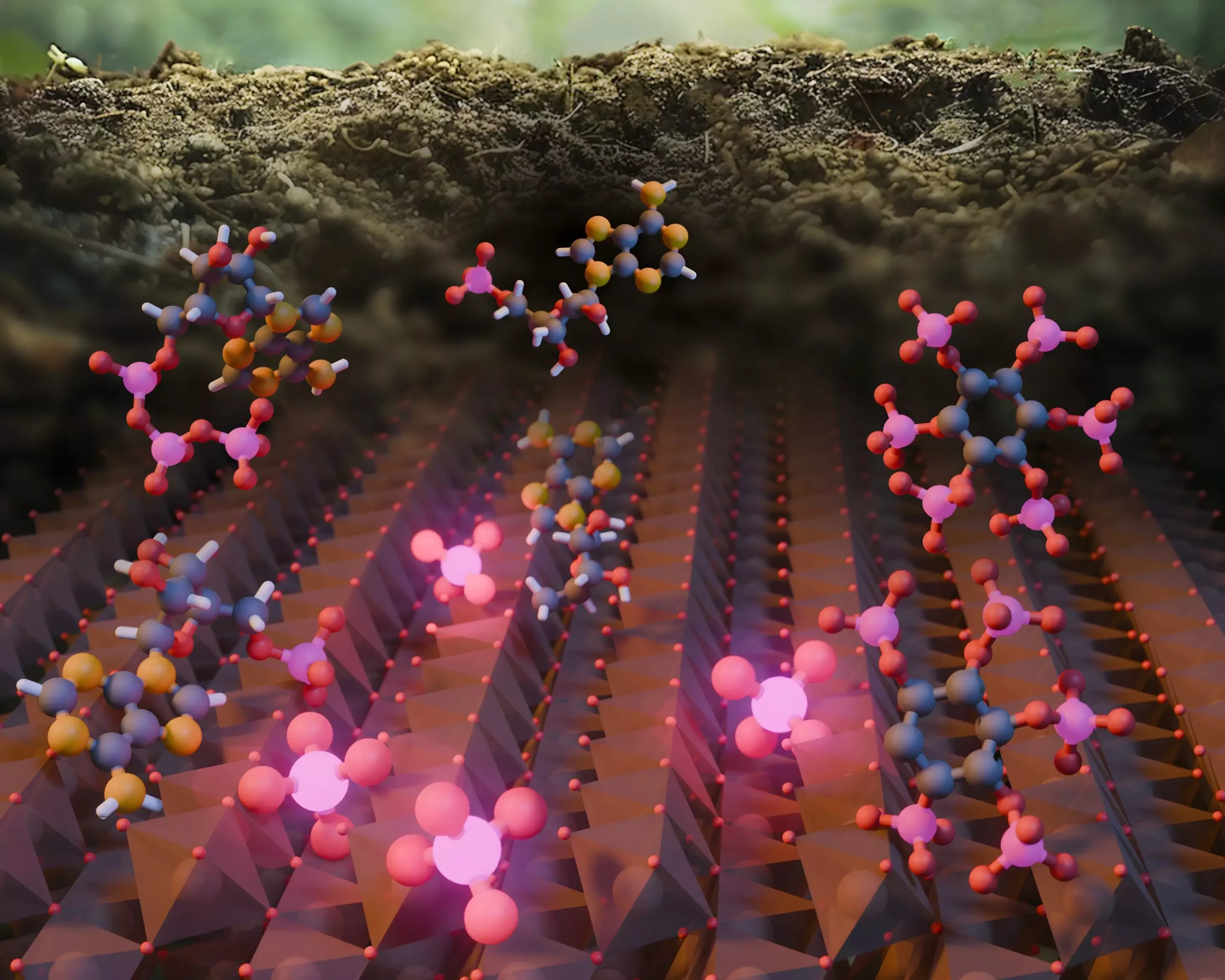In a groundbreaking research endeavor spearheaded by Northwestern University, scientists have uncovered an astonishingly overlooked aspect of phosphorus cycling in our ecosystems. Published in *Nature Communications*, this study delves into the crucial role that iron oxide plays in converting organic phosphorus into its inorganic form—an essential operation for sustaining agricultural productivity and global food security. While previous understandings of phosphorus cycling primarily credited plant and microbial enzymes with this transformation, this new insight showcases a minerals-based approach that could revolutionize the way we comprehend nutrient cycling in our soils.
Phosphorus is a vital nutrient that underpins plant growth, making it indispensable in fertilizers. Without it, the agricultural sector cannot ensure the health of crops, and food production may face dire challenges. The alarming reality is that phosphorus reserves on Earth are finite; depending on mining as the primary source for fertilizers isn’t sustainable in the long run. With projections suggesting that we might exhaust these sources in mere decades, innovative strategies for phosphorus recycling are critical for ensuring food security in the future.
The Mechanisms Behind Phosphorus Transformation
Traditionally, scientists believed that only enzyme-mediated processes played a significant role in breaking down organic phosphorus, which is generally bound to carbon and oxygen in complex forms. Plants and microbes were thought to be solely responsible for generating bioavailable inorganic phosphorus—required for growth—through this enzymatic action. However, research led by Ludmilla Aristilde, an associate professor in environmental engineering at Northwestern, invites us to rethink these biological assumptions.
Aristilde and her team embarked on a thorough investigation into whether minerals could fulfill catalytic roles in this phosphorus transformation. The researchers had previously noted that iron oxides are abundant in soils and possess properties that could allow them to act beyond mere passive participants in the soil ecosystem. Using sophisticated laboratory techniques, they conducted experiments which revealed that iron oxide indeed plays a critical role in recycling phosphorus at rates comparable to biological enzymes.
The Surprising Discoveries: Iron Oxide as a Catalyst
As the research progressed, Aristilde and her team discovered an unexpected phenomenon. Through rigorous experimentation, they measured how much inorganic phosphorus was generated when organic phosphorus was subjected to the catalytic influence of iron oxide. To their surprise, a significant portion of inorganic phosphorus failed to enter the solution as theorized; instead, it appeared to cling to the surface of the iron oxide particles.
Utilizing advanced imaging techniques at the Stanford Synchrotron Radiation Lightsource, the team could visualize how phosphorus bonds to iron oxide. This magical interplay of minerals and nutrients unveiled a new layer of complexity in phosphorus cycling. By reinforcing the mineral’s catalytic role, the team not only reshapes our understanding of soil chemistry but also opens new avenues for harnessing natural processes for sustainable agriculture.
Implications for Agriculture and Beyond
Understanding that iron oxide can play such a crucial role in phosphorus recycling holds transformative implications for agricultural practices. For one, this knowledge will facilitate the development of more effective fertilizers that utilize natural processes to boost nutrient availability while reducing dependence on mined phosphorus. Such insights will accelerate the advancement of sustainable farming techniques, ultimately benefiting food production systems worldwide.
Moreover, the ramifications of these findings extend far beyond terrestrial ecosystems. Aristilde expressed that the discoveries could also spark new interest in examining phosphorus cycles on other planets. The iron-rich landscapes of Mars, for example, present an invaluable opportunity for comparative studies in nutrient cycling and potential agricultural practices in extraterrestrial environments.
This innovative study promotes a profound shift in our perception of nutrient dynamics. As we edge closer to a future characterized by scarcity, embracing nature-based solutions like phosphorus recycling may illuminate pathways toward enhanced food security.
Understanding mineral interactions in nutrient cycling not only informs practical environmental practices but reinforces the intricate connections within Earth’s ecosystems. As we strive for sustainability in food production, these enlightening findings challenge us to rethink traditional paradigms, propelling us closer to a resilient future filled with promise and potential.


Leave a Reply